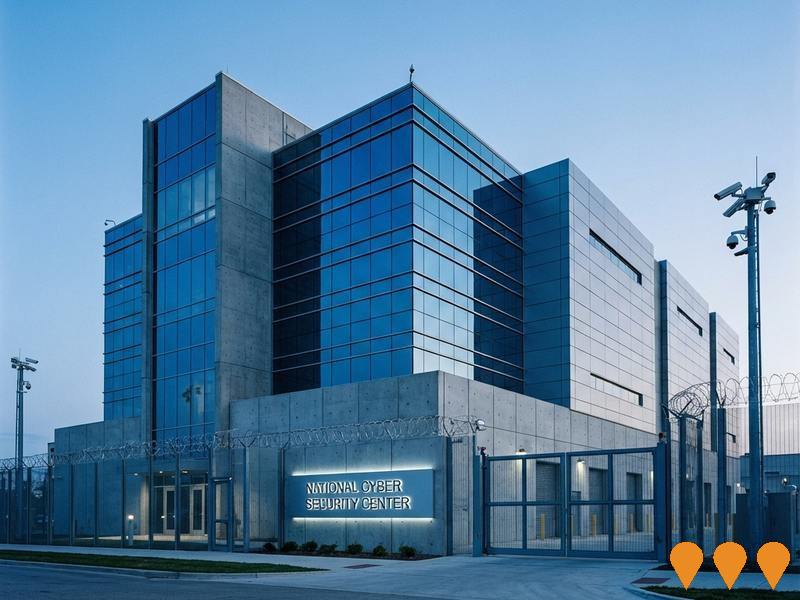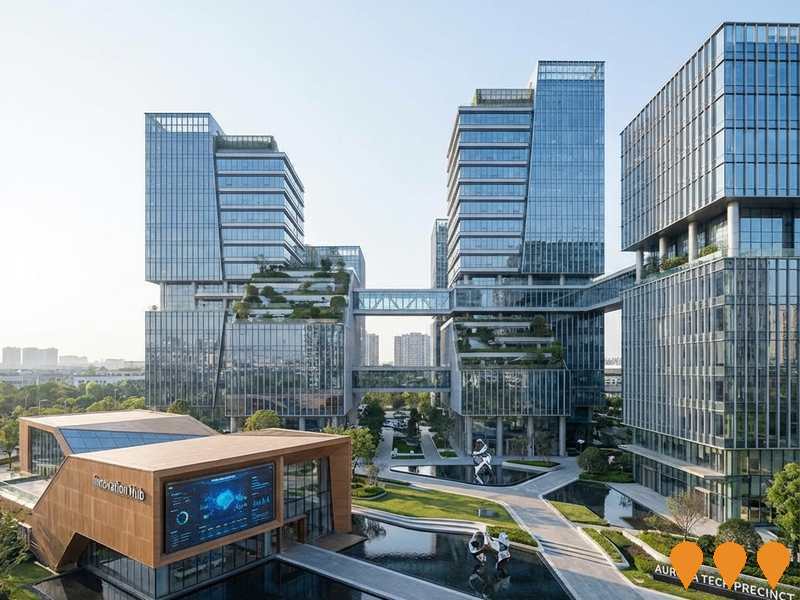Chart Color Schemes
est. as @ -- *
ABS ERP | -- people | --
2021 Census | -- people
Sales Activity
Curious about local property values? Filter the chart to assess the volume and appreciation (including resales) trends and regional comparisons, or scroll to the map below view this information at an individual property level.
Find a Recent Sale
Sales Detail
Population
Rockhampton City is positioned among the lower quartile of areas assessed nationally for population growth based on AreaSearch's assessment of recent, and medium term trends
Rockhampton City's population was approximately 3,448 as of August 2025. This figure represents an increase of 84 people since the 2021 Census, which recorded a population of 3,364. The growth is inferred from the estimated resident population of 3,381 in June 2024 and an additional 42 validated new addresses after the Census date. This results in a population density ratio of 67 persons per square kilometer. Overseas migration drove primary population growth, contributing about 52.5% of overall gains recently.
AreaSearch uses ABS/Geoscience Australia projections for each SA2 area released in 2024 with a base year of 2022. For areas not covered and years post-2032, Queensland State Government's SA2 area projections from 2023 based on 2021 data are adopted. These state projections lack age category splits; thus, proportional growth weightings aligned with ABS Greater Capital Region projections released in 2023 and based on 2022 data are applied where utilized. Future demographic trends anticipate lower quartile growth for national non-metropolitan areas. The area is projected to grow by 126 persons to 2041, recording a total gain of 1.7% over the 17 years.
Frequently Asked Questions - Population
Development
AreaSearch assessment of residential development drivers sees a low level of activity in Rockhampton City, placing the area among the bottom 25% of areas assessed nationally
Rockhampton City has received approximately 14 dwelling approvals per year. Over the past five financial years, from FY-21 to FY-25, around 70 homes have been approved, with none yet in FY-26. Despite a population decline during this period, development activity has been relatively adequate, benefiting buyers due to new homes being constructed at an average value of $393,000, which is below regional levels.
This year, $44.2 million in commercial approvals have been registered, indicating strong local business investment. Compared to the rest of Queensland, Rockhampton City maintains similar construction rates per capita, suggesting market stability aligned with regional trends, although recent activity has eased slightly. Current construction consists of 14.0% standalone homes and 86.0% medium and high-density housing, providing more affordable entry points for downsizers, investors, and first-home buyers. This shift from the area's existing housing composition (currently 76.0% houses) reflects decreasing developable sites and changing lifestyles. The estimated population per dwelling approval is 479 people, indicating a quiet development environment.
Future projections anticipate Rockhampton City adding 59 residents by 2041. Based on current development patterns, new housing supply should meet demand, offering favourable conditions for buyers and potentially facilitating population growth beyond current projections.
Frequently Asked Questions - Development
Infrastructure
Rockhampton City has emerging levels of nearby infrastructure activity, ranking in the 28thth percentile nationally
Changes to local infrastructure significantly influence an area's performance. AreaSearch has identified 21 projects likely impacting the area. Key projects include Browne Park Redevelopment, Rockhampton Botanic Gardens and Zoo Redevelopment, Central Queensland Defence Industry Precinct Business Case, and Rockhampton Museum of Art. The following list details those most relevant.
Professional plan users can use the search below to filter and access additional projects.
INFRASTRUCTURE SEARCH
 Denotes AI-based impression for illustrative purposes only, not to be taken as definitive under any circumstances. Please follow links and conduct other investigations from the project's source for actual imagery. Developers and project owners wishing us to use original imagery please Contact Us and we will do so.
Denotes AI-based impression for illustrative purposes only, not to be taken as definitive under any circumstances. Please follow links and conduct other investigations from the project's source for actual imagery. Developers and project owners wishing us to use original imagery please Contact Us and we will do so.
Frequently Asked Questions - Infrastructure
Rockhampton Hospital Emergency Department Expansion
Expansion of the Emergency Department at Rockhampton Hospital, completed in July 2025. The project delivered nine new acute treatment spaces including seven beds and two recliner treatment chairs, plus an additional consultation and treatment room. A new Fast Track area with twelve treatment spaces was created in the space vacated by the Orthopaedic Clinic, which relocated to a purpose-built facility in June 2025. The expansion improves patient access, flow, and care for both urgent and non-complex cases.

Bruce Highway Upgrade Program
The Bruce Highway Upgrade Program is Queensland's largest road infrastructure initiative, delivering safety, flood resilience, and capacity improvements along the 1,677km corridor from Brisbane to Cairns. The massive investment program includes the $9 billion Targeted Safety Program, major bypass projects (including Gympie, Rockhampton, and Tiaro), bridge replacements, and wide centre line treatments. Jointly funded by the Australian and Queensland governments, works are progressing across multiple sections simultaneously.
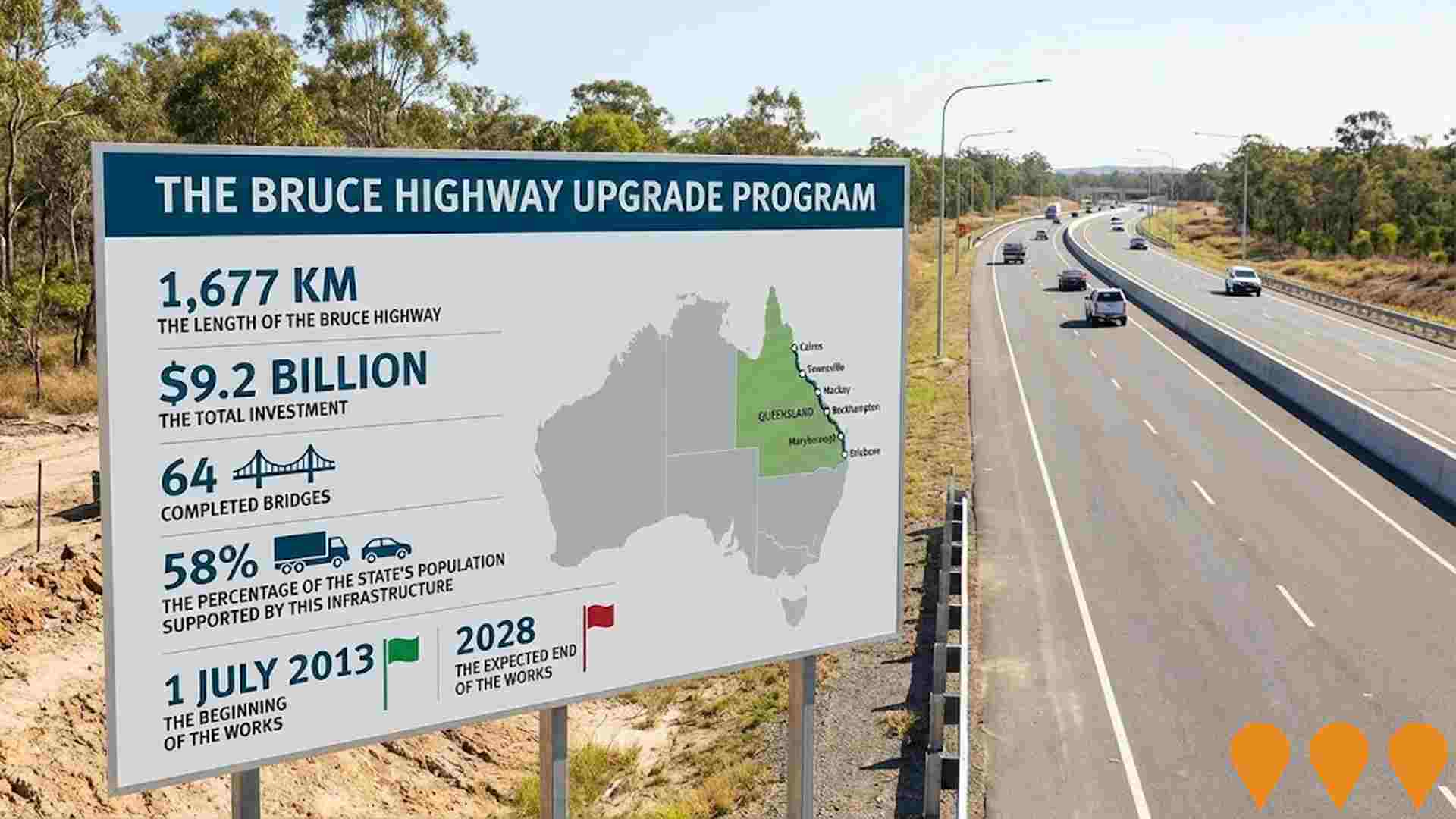
Rockhampton Ring Road
A 17 km high-standard four-lane ring road bypassing Rockhampton CBD, connecting Capricorn Highway to Rockhampton-Yeppoon Road with a new 650 m dual-carriageway bridge over the Fitzroy River (Q100 flood immunity). The $1.76 billion project (80% Federal / 20% Queensland funded) will remove heavy vehicles from the CBD, bypass 19 traffic lights, improve freight efficiency on the Bruce Highway corridor, and enhance regional flood resilience. Construction started November 2023; project remains on track for completion by late 2027.
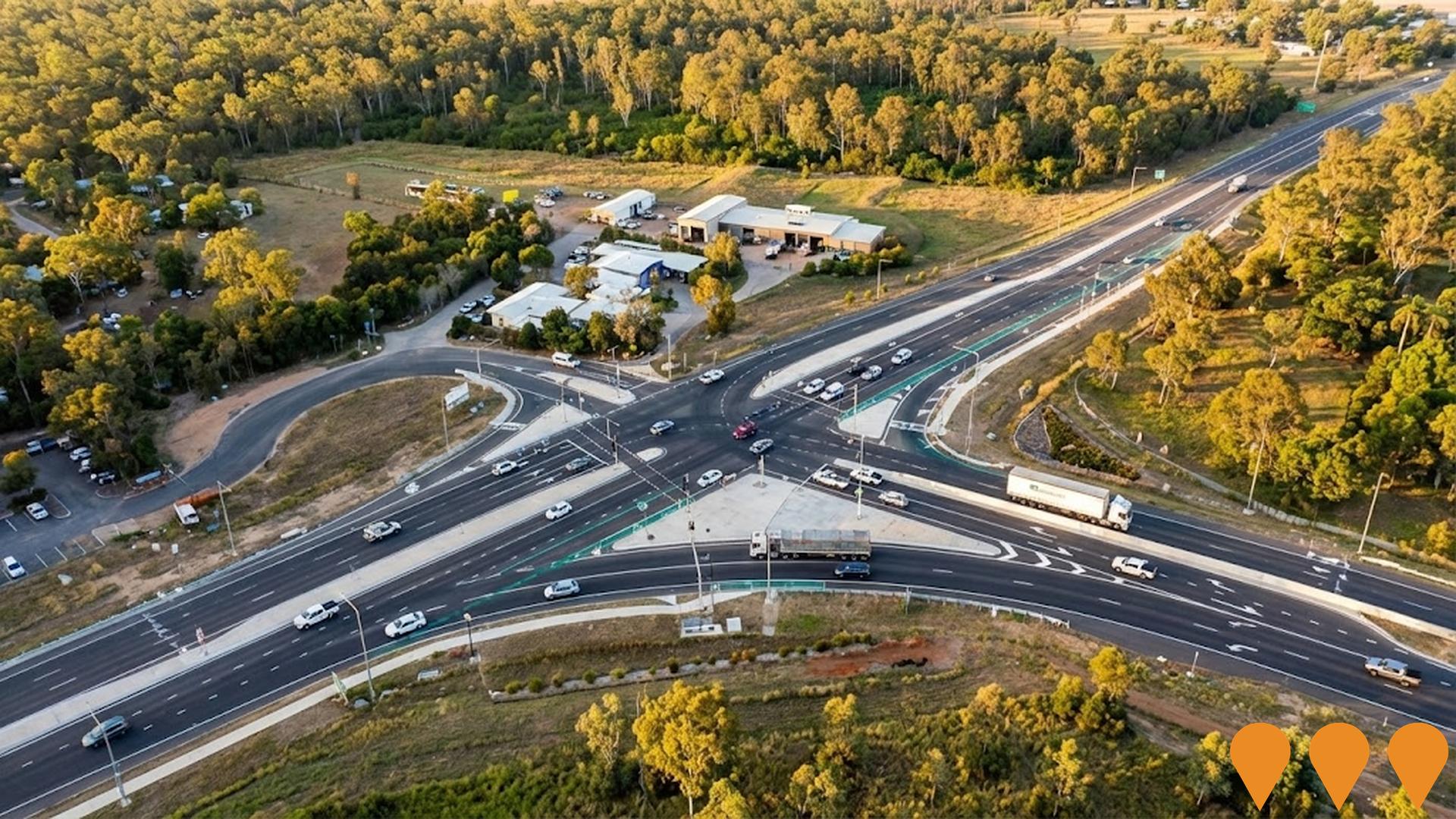
ALDI at Stockland Rockhampton
New 1,186 sqm freestanding ALDI supermarket opened January 29, 2025, at Stockland Rockhampton shopping centre. This is the second ALDI in Rockhampton and the first serving the northern suburbs, creating a triple supermarket hub. The development included construction of a freestanding building in the car park at the Kmart side of the centre, with modern interior design, self-checkouts, and 118 dedicated parking spaces. Additional improvements include shade sails, a new garden plaza, and covered pedestrian walkway connecting to the main shopping centre.
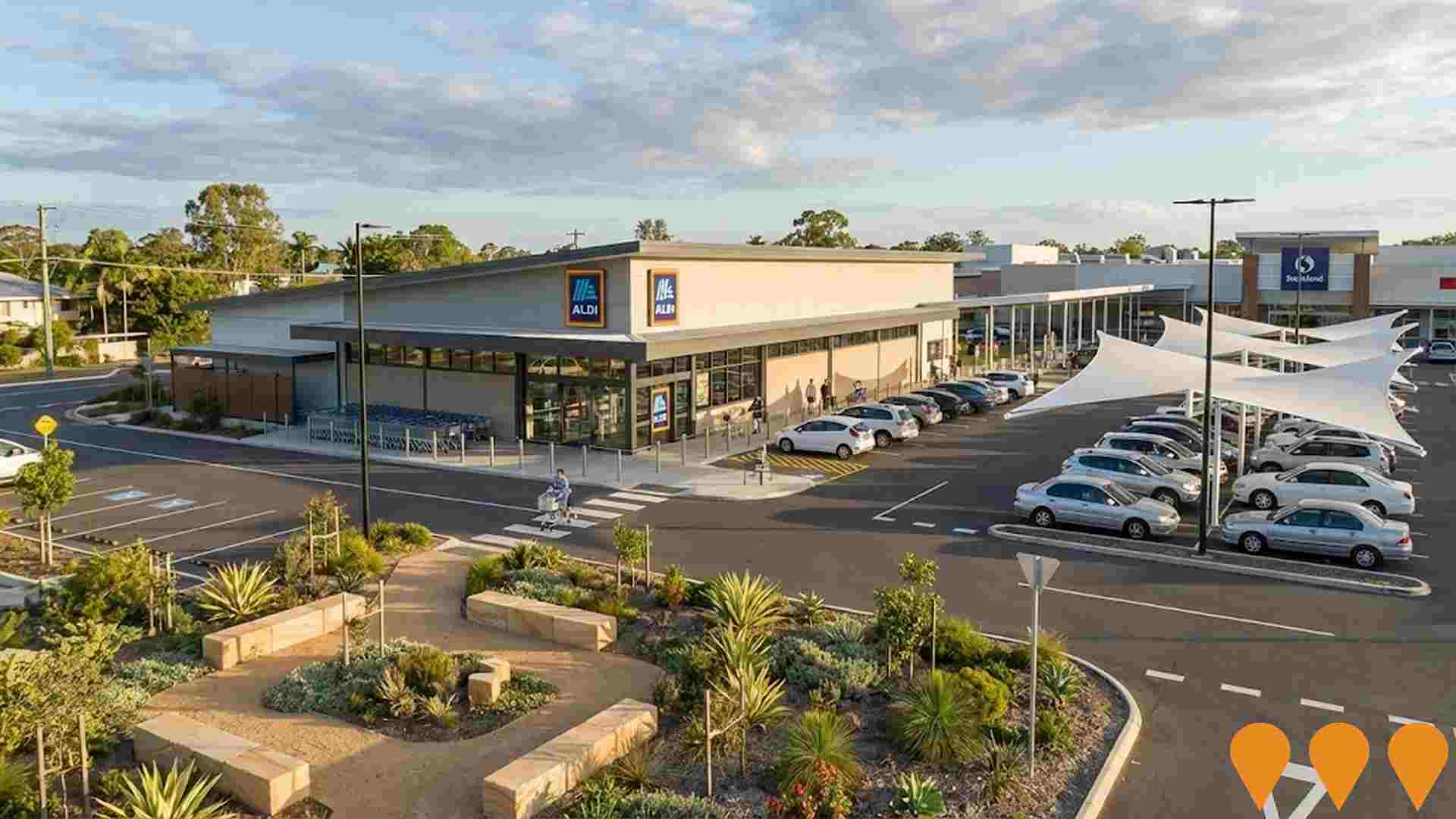
Rockhampton Museum of Art
Three storey regional art museum built by Rockhampton Regional Council on Quay Street, opened in 2022. Around 4,700 sqm GFA with multiple exhibition spaces, learning studios, shop and a cafe, positioned on the Fitzroy River waterfront (Tunuba).

Rocky Stadium at Victoria Park
Proposed development of a rectangular football stadium to be built adjacent to the existing Rocky Sports Club at Victoria Park. The design is for a permanent seating capacity of 8,500, expandable to 16,000 with temporary seating, to host top-tier sports and entertainment events. The Federal Government has announced $23 million in funding. The status is currently *Proposed* by the Austadiums website. Note: Other search results relate to a different 'Victoria Park Precinct' in Brisbane for the 2032 Olympics, which is a different project.
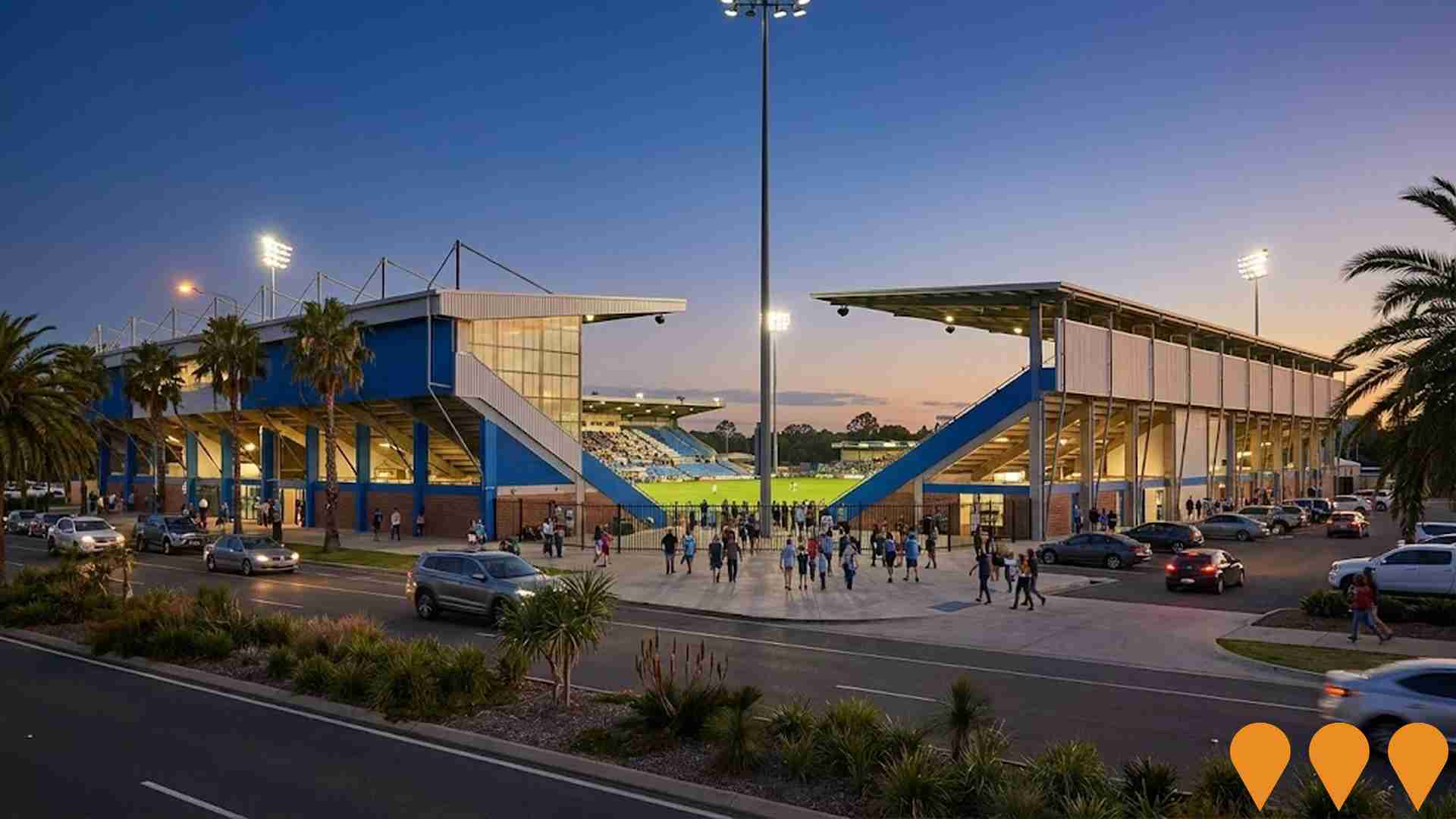
Rockhampton Showgrounds Precinct Redevelopment
Master planning and long-term redevelopment of the Showgrounds and Victoria Park precinct to create a high-quality multi-purpose venue for exhibitions, events, community activities, and sporting facilities. The master planning process is to guide the staged development of the precinct over time and address constraints like parking and flooding.

Rockhampton Botanic Gardens and Zoo Redevelopment
Major redevelopment of Rockhampton Botanic Gardens and Zoo including new animal exhibits, improved visitor facilities, enhanced gardens, and educational spaces. The project aims to create a world-class tourism destination and conservation facility.

Employment
Employment conditions in Rockhampton City face significant challenges, ranking among the bottom 10% of areas assessed nationally
Rockhampton City has a balanced workforce with white and blue collar jobs. Key sectors include health care & social assistance, accommodation & food, and construction.
As of June 2025, 1,404 residents are employed, with an unemployment rate of 21.9%. This is 17.9% higher than the Rest of Qld's rate of 3.9%. Workforce participation in Rockhampton City lags at 52.1%, compared to Rest of Qld's 59.1%. The area has notable concentration in accommodation & food, with employment levels at 1.6 times the regional average.
Conversely, agriculture, forestry & fishing employs just 1.7% of local workers, below Rest of Qld's 4.5%. As at the Census, there are 2.8 workers for every resident, indicating Rockhampton City functions as an employment hub. Between June 2024 and June 2025, labour force increased by 5.0% while employment declined by 3.6%, leading to a rise in unemployment rate by 7.0 percentage points. In contrast, Rest of Qld saw employment rise by 1.8%, labour force grow by 2.0%, and unemployment increase by 0.2 percentage points. Jobs and Skills Australia's national employment forecasts from May 2025 project a 6.6% growth over five years and 13.7% over ten years. Applying these projections to Rockhampton City's employment mix suggests local growth of approximately 6.6%% over five years and 13.8% over ten years, though this is a simple extrapolation for illustrative purposes only.
Frequently Asked Questions - Employment
Income
The area's income levels rank in the lower 15% nationally based on AreaSearch comparative data
According to AreaSearch's aggregation of ATO data released on June 30, 2022 for financial year 2021-22, Rockhampton City had a median income among taxpayers of $45,329 and an average income of $58,778. This was below the national averages of $50,780 (median) and $64,844 (average). Based on Wage Price Index growth from June 2021 to September 2025, estimated median income for Rockhampton City is approximately $51,671 and average income is around $67,001. Census data from 2021 shows Rockhampton City's household, family, and personal incomes fall between the 5th and 13th percentiles nationally. Income distribution in Rockhampton City, with 26.9% of individuals earning between $800 - $1,499, contrasts with the region where the $1,500 - $2,999 bracket is most prevalent at 31.7%. Housing affordability pressures are severe in Rockhampton City, with only 83.2% of income remaining after housing costs, ranking at the 7th percentile nationally.
Frequently Asked Questions - Income
Housing
Rockhampton City is characterized by a predominantly suburban housing profile, with a higher proportion of rental properties than the broader region
Rockhampton City's dwelling structures, as per the latest Census, consisted of 75.7% houses and 24.3% other dwellings (semi-detached, apartments, 'other' dwellings). In comparison, Non-Metro Qld had 88.5% houses and 11.5% other dwellings. Home ownership in Rockhampton City was at 28.3%, with the rest of dwellings either mortgaged (25.8%) or rented (45.9%). The median monthly mortgage repayment was $1,073, below Non-Metro Qld's average of $1,517 and Australia's national average of $1,863. Median weekly rent in Rockhampton City was recorded at $250, compared to Non-Metro Qld's $300 and the national figure of $375.
Frequently Asked Questions - Housing
Household Composition
Rockhampton City features high concentrations of lone person households and group households, with a lower-than-average median household size
Family households account for 54.8% of all households, including 13.5% couples with children, 19.7% couples without children, and 17.9% single parent families. Non-family households constitute the remaining 45.2%, with lone person households at 41.0% and group households making up 4.5%. The median household size is 2.1 people, smaller than the Rest of Qld average of 2.5.
Frequently Asked Questions - Households
Local Schools & Education
Rockhampton City faces educational challenges, with performance metrics placing it in the bottom quartile of areas assessed nationally
The area's university qualification rate is 14.3%, significantly lower than the Australian average of 30.4%. Bachelor degrees are most common at 9.6%, followed by postgraduate qualifications (2.9%) and graduate diplomas (1.8%). Vocational credentials are prevalent, with 37.8% of residents aged 15+ holding such qualifications - advanced diplomas at 6.6% and certificates at 31.2%. Educational participation is high at 27.3%, including 10.7% in primary education, 6.6% in secondary education, and 4.4% pursuing tertiary education.
Rockhampton City's three schools have a combined enrollment of 230 students. The educational mix includes two primary schools and one K-12 school. Local school capacity is limited at 6.7 places per 100 residents compared to the regional average of 17.6, leading many families to travel for schooling.
Frequently Asked Questions - Education
Schools Detail
Nearby Services & Amenities
Transport
No public transport data available for this catchment area.
Frequently Asked Questions - Transport
Transport Stops Detail
Health
Health performance in Rockhampton City is a key challenge with a range of health conditions having marked impacts on both younger and older age cohorts
Rockhampton City faces significant health challenges, with various conditions affecting both younger and older age groups. As of approximately 2019, around 49% (~1,692 people) have private health cover, compared to 53.2% in the rest of Queensland and a national average of 55.3%. Mental health issues and arthritis are the most prevalent conditions, affecting 12.0% and 10.5% of residents respectively.
About 57.5% report being free from medical ailments, compared to 64.7% in the rest of Queensland. Approximately 18.5% (637 people) are aged 65 and over. Health outcomes among seniors present some challenges, generally aligning with the overall population's health profile.
Frequently Asked Questions - Health
Cultural Diversity
Rockhampton City is considerably less culturally diverse than average when assessed alongside AreaSearch's national rankings for language and cultural background related metrics
Rockhampton City's cultural diversity was found to be below average, with 84.7% of its population being citizens, 88.7% born in Australia, and 93.7% speaking English only at home. The predominant religion was Christianity, comprising 51.3% of Rockhampton City's population, compared to 56.3% across the rest of Queensland. In terms of ancestry, the top three groups were English (29.9%), Australian (29.4%), and Irish (9.0%).
Notably, certain ethnic groups had differing representations: Australian Aboriginal was overrepresented at 7.5%, compared to 5.1% regionally; German was also slightly overrepresented at 5.1%, versus 4.9%; Maori, however, was only marginally overrepresented at 0.7%.
Frequently Asked Questions - Diversity
Age
Rockhampton City's median age exceeds the national pattern
The median age in Rockhampton City is 41 years, matching Rest of Qld's average but somewhat older than Australia's average of 38 years. Compared to Rest of Qld, Rockhampton City has a higher concentration of residents aged 25-34 (15.6%) but fewer residents aged 5-14 (10.3%). According to the 2021 Census, the 0-4 age group grew from 4.8% to 6.1%, while the 25-34 cohort increased from 14.3% to 15.6%. Conversely, the 15-24 cohort declined from 13.2% to 11.1%, and the 45-54 group decreased from 13.0% to 11.6%. Looking ahead to 2041, demographic projections show significant shifts in Rockhampton City's age structure. The 25-34 group is expected to grow by 17%, reaching 627 people from the current 536. Conversely, the 45-54 and 15-24 cohorts are projected to experience population declines.

